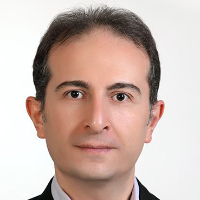Drying of potato using hybrid method (microwave- infrared- convective hot air) and study on quality attributes of dehydrated products
Potato is a plant of the family (Solanaceae) and due to its vitamins, minerals, energy and high fiber, it is one of the most important agricultural products. Raw potato starch is indigestive, so thermal processing is necessary to increase its digestibility. Due to the increased unwillingness of consumers to use preservatives in food composition, demand for dried potatoes with improved qualitative characteristics has increased. One of the most important operations in food production is drying which reduces the amount of moisture in the food matrix and inhibits microbial and enzymatic activity. So far different methods have been used for drying. One of the most commonly used methods is hot air drying, which has problems and disadvantages, such as high energy consumption and long drying time. Therefore, to reduce the disadvantages of hot air drying, complementary processes such as microwave or infrared drying are used. Microwave drying makes dry products have a good quality in terms of porosity, water reabsorption capacity and shrinkage. Drying with infrared has advantages such as high drying speed, ease of operation, strong sterilization ability and high-quality dried products. Today, combination methods such as Hot air- Microwave and Hot air- Infrared methods are commonly used for drying of food materials. In the Hot air- Microwave method, the volumetric heat generated by the microwave transfers moisture to the surface of the product, and then the moisture is expelled from the surface by the flow of hot air. Also, in the Hot air- Infrared method, when the product is exposed to infrared, this action increases the molecular vibration in the layers of the inner surfaces and leads to an increase in the speed of moisture movement from inside the product to its surface. Finally, water vapor is formed on the surface of the material, which can be easily removed by convection air flow. The use of hybrid methods greatly improves product quality and greatly reduces energy consumption as well as drying time. The purpose of this research was investigation the effect of different drying methods on the quality characteristics of dried potatoes.
Potatoes (Variety Agria) were purchased from a local market for this research. The potatoes were cut after washing and peeling in the form of square cubes in the sizes of 1.2×1/2×1/2 cm. Prior to the blanching process, in order to prevent moisture reduction and color change, sliced samples were kept in a lid plate. For the next stage, samples were blanched in a water bath with a temperature control sensor. A 500-ml beaker containing water was placed in the water bath. Once it reached 100 °C, the samples were placed inside the beaker and were blanched for 5 min. Finally, the residual water on the samples was moistened using a tissue and the weight was re-measured. Finally, potato cubes were dried in different methods (Hot air 45 °C with air speed of 1 m/s, Microwave 540 W, Infrared 600 W, Hot air 45 °C- Microwave 540 W, Hot air 45 °C- Infrared 600 W and Hot air 45 °C- Microwave 540 W- Infrared 600 W). Qualitative properties of samples, such as moisture content, effective moisture diffusivity coefficient, water reabsorption, shrinkage, color, and energy consumption were evaluated in this study. In this research, statistical analysis of the experiment data was performed as a factorial design based on a completely randomized design with IBM SPSS Statistics 22 software and the evaluation of the optimum method was done using Design Expert 10 software.
In all methods, moisture ratio constantly reduced. In case of effective moisture diffusivity coefficient, the lowest amount was observed in the hot air method. Since there is a direct correlation between the effective moisture diffusivity coefficient and temperature, and on the other hand, the energy of hot air is lower than irradiation, therefore, effective moisture diffusivity coefficient in this method is lower than other methods. In case of water reabsorption when using microwaves, a significant increase in the rate and amount of this parameter occurs. When hot air, infrared and combinations of these two were used for drying, although rate of shrinkage was low, it was observed that final shrinkage reached the highest value. In these methods, the amount of color change (ΔE) started from zero (control sample) and over time, its amount also increased. The best possible conditions were when the amount of color changes was very low and also the values of (L) and (b) were high and the rate of (a) was low. The smallest amount of color variation was observed in hot air, infrared and hot air-infrared methods. Because in these methods, the process temperature was low compared to the methods used microwave energy, so the intensity of the Millard reaction is also lower, and the color of samples that were dried with these methods, were far better in quality. In terms of energy consumption, the highest amount was related to the methods used hot air. In the methods that used microwave energy for drying, the drying rate and the Effective moisture diffusivity coefficient increased and the process time decreased.When microwave was used for drying, the highest rate of water reabsorption was achieved.The highest amount of shrinkage was observed when the 600 W infrared method was used for drying.
In optimum mode, the best conditions were when the amount of shrinkage, color variations, energy consumption and (a) index were low and the rate of water reabsorption, and the indicators (L) and (b) were high. After optimization (based on the optimal qualitative characteristics,) it was determined that the optimum method between different drying methods was the combination of hot air 45 °C-infrared 600 W.
- حق عضویت دریافتی صرف حمایت از نشریات عضو و نگهداری، تکمیل و توسعه مگیران میشود.
- پرداخت حق اشتراک و دانلود مقالات اجازه بازنشر آن در سایر رسانههای چاپی و دیجیتال را به کاربر نمیدهد.



